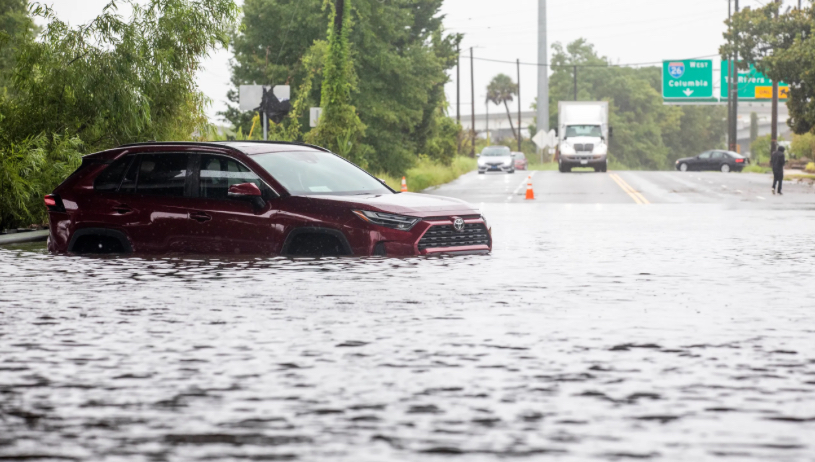
Tropical Storm Debby made a second landfall early Thursday morning northeast of Charleston, South Carolina, bringing with it intense rainfall that is worsening flooding concerns in both South and North Carolina. After initially striking Florida’s Gulf Coast as a Category 1 hurricane on Monday, the slow-moving storm has caused significant damage as it moved northward.
Debby made landfall near Bulls Bay, South Carolina, having already swept across northern Florida and Georgia. The storm has been deadly, responsible for at least seven deaths. As of Thursday morning, Debby was positioned about 80 miles southeast of Charlotte, North Carolina and 110 miles southwest of Raleigh. The National Hurricane Center has issued warnings about further heavy rainfall, predicting up to an additional 3 inches in eastern South Carolina, where some areas have already seen over 25 inches since Monday. Southeastern North Carolina and parts of Virginia may receive up to 15 and 10 inches of rain respectively.
Although there was a slight reduction in rainfall on Wednesday, meteorologists are cautioning that heavy rains could return on Thursday. Rich Bann from the National Weather Service noted that “moisture has pulsed back into Debby,” which could worsen flooding risks as the storm moves inland.
The storm is currently moving northwest at 10 miles per hour with maximum sustained winds of 40 mph. It is expected to weaken into a tropical depression by Thursday afternoon or evening, though it will continue to bring rain to Maryland, Washington, upstate New York and Vermont over the coming days. The expected rainfall in these areas is likely to be less severe than in the Carolinas.
Power outages are widespread, with over 141,000 customers in the Carolinas and Virginia without electricity as of Thursday morning. Florida has also experienced outages, though the situation has improved since earlier in the week.
In North Carolina, the storm’s impact has been severe, including an apparent tornado that collapsed a house in Wilson County, resulting in one death and damage to several other structures. The National Hurricane Center has warned that more tornadoes could occur in the region on Thursday.
As Debby moves northward, it may bring up to 6 inches of rain from Maryland to northern Vermont by the weekend. However, New York City is expected to avoid the worst of the storm. In Bulloch County, Georgia, floodwaters caused four dams to burst on Wednesday, leading to evacuations and severe flooding.
Emergency management officials are on high alert as rivers in the Carolinas continue to swell, posing a significant flooding risk even after the storm passes.
Local reports from Wilmington, North Carolina, describe rising water levels and urgent flood preparations, while Charleston, South Carolina, is dealing with road closures and localized flooding. In Savannah, Georgia, officials warn that floodwaters from upstream could cause further disruptions.
Overall, Debby continues to pose a significant threat to the southeastern United States and officials are urging residents to remain vigilant and take necessary precautions to protect themselves and their property.







